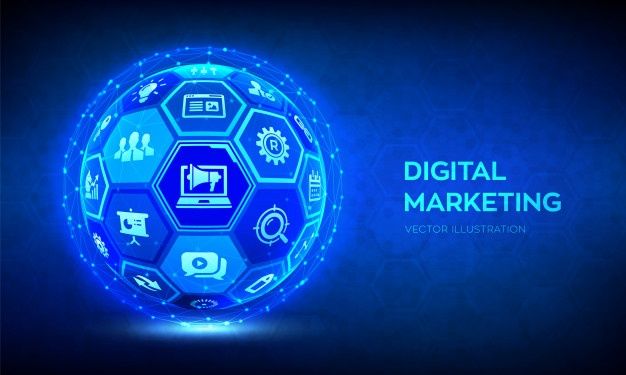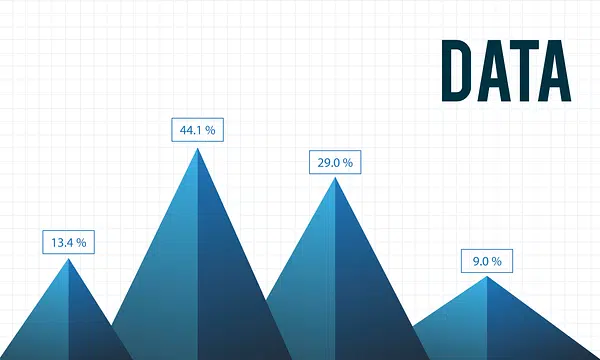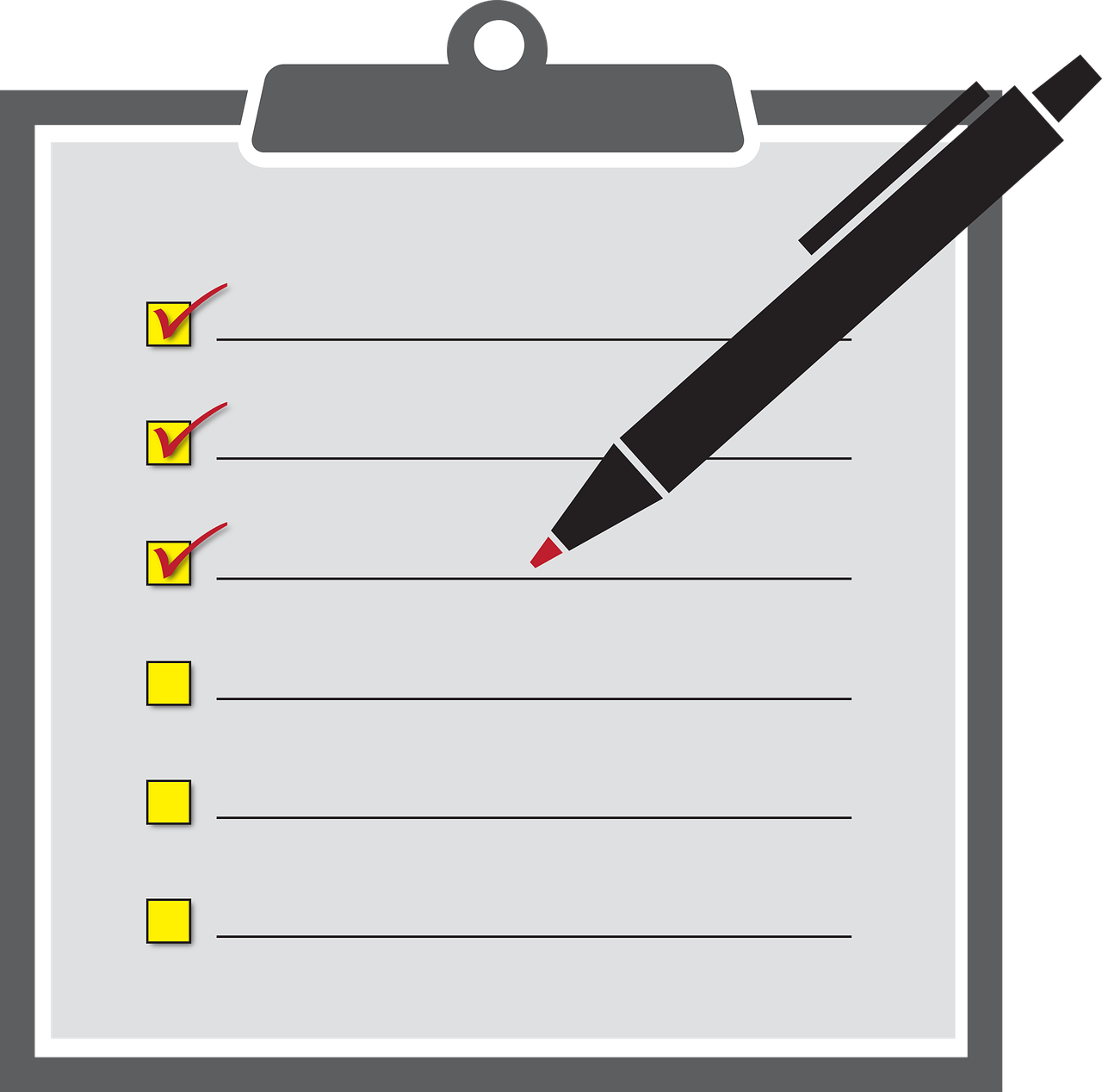In today’s fiercely competitive digital arena, simply having a great product or service isn’t enough. Businesses need to connect with their audience effectively, at scale, and with pinpoint precision. This is where marketing automation steps in, revolutionizing how companies engage with customers throughout their journey. Far from just scheduling emails, marketing automation is about leveraging sophisticated software platforms to streamline, automate, and measure marketing tasks and workflows, driving unparalleled efficiency and personalization. It’s the strategic backbone enabling smarter campaigns now, transforming raw leads into loyal customers and amplifying revenue with intelligent, data-driven strategies.
The Evolution of Marketing: From Manual Chaos to Automated Precision
To fully grasp the transformative power of marketing automation, it’s crucial to understand the historical context of marketing practices and the inherent limitations that led to its necessity.
A. The Era of Manual Marketing Campaigns
For decades, marketing was largely a manual, labor-intensive, and often haphazard endeavor. Marketers juggled multiple tasks, each requiring significant human effort and leading to inefficiencies, inconsistencies, and missed opportunities.
- Time-Consuming Repetitive Tasks: Imagine sending personalized emails to thousands of prospects, one by one. Or manually updating CRM records after every customer interaction. These repetitive, high-volume tasks consumed vast amounts of time, diverting valuable marketing resources from strategic thinking and creative development.
- Inconsistent Messaging: Without centralized systems, ensuring consistent brand voice and messaging across different channels (email, social media, ads) and various customer touchpoints was a constant battle. This often led to fragmented customer experiences and diluted brand identity.
- Limited Personalization: Mass marketing was the norm. Personalization was rudimentary, often limited to inserting a customer’s first name. True one-to-one communication, tailored to individual behaviors and preferences, was practically impossible at scale, leading to generic and often ignored communications.
- Inefficient Lead Nurturing: Guiding a prospect from initial interest to a qualified sales lead required constant manual follow-ups, remembering past interactions, and knowing when to deliver the right content. This process was prone to oversight, leading to many promising leads falling through the cracks.
- Lack of Measurable Insights: Tracking the effectiveness of marketing efforts was challenging. It was difficult to precisely attribute leads or sales to specific campaigns, understand customer journey paths, or accurately calculate Return on Investment (ROI) without robust, integrated systems.
- Siloed Data: Customer data often resided in disparate systems – CRM, email platforms, website analytics – making it nearly impossible to gain a unified view of the customer, leading to disjointed marketing efforts and poor decision-making.
B. The Digital Revolution and the Rise of Automation
The explosion of digital channels (websites, email, social media, search engines) and the increasing volume of customer data created both immense opportunities and overwhelming challenges for traditional marketing. This paved the way for the emergence of marketing automation.
- Scalability Demands: As businesses sought to reach larger audiences online, manual methods simply couldn’t keep pace. Automation became essential to manage interactions with thousands or millions of prospects simultaneously.
- Personalization Imperative: Digital channels generated a wealth of customer data, enabling unprecedented opportunities for personalization. However, manually segmenting audiences and tailoring content for each segment was infeasible without automation.
- Data-Driven Decision Making: The digital world brought the promise of measurable marketing. Automation platforms were developed to track every interaction, providing the data necessary for in-depth analysis, optimization, and accurate ROI calculations.
- Integration of Marketing Functions: Marketing automation platforms began to integrate various marketing tools and channels (email, CRM, analytics, landing pages) into a single, cohesive system, offering a unified view of the customer journey.
- Focus on Customer Journey: The recognition that customers follow complex, non-linear paths to purchase emphasized the need for automated systems that could guide and engage prospects through every stage of their unique journey, delivering relevant content at the opportune moment.
Marketing automation, therefore, was not merely an upgrade but a necessary evolution, transforming marketing from a chaotic series of manual tasks into a precise, data-driven, and highly scalable discipline.
Core Principles and Defining Characteristics of Marketing Automation
Marketing automation operates on several fundamental principles and possesses key characteristics that differentiate it from simple email blasts or basic scheduling tools. It’s about intelligence and orchestrated actions.
A. Centralized Customer Data Management (CRM Integration)
At its heart, marketing automation thrives on a unified and centralized view of customer data. This typically involves deep integration with a Customer Relationship Management (CRM) system.
- Single Source of Truth: All customer interactions, demographic information, behavioral data (website visits, email opens, content downloads), and purchase history are aggregated into one platform.
- Segmentation Capability: This rich, unified data allows for highly sophisticated customer segmentation based on a myriad of criteria (e.g., demographics, interests, past behavior, lead score, purchase history).
- Personalization Foundation: A comprehensive customer profile is the bedrock for delivering truly personalized messages and experiences across various channels.
B. Workflow Automation and Lead Nurturing
The ability to automate multi-step, multi-channel marketing workflows is a cornerstone of marketing automation. This is particularly crucial for lead nurturing.
- Automated Sequences: Marketers can design automated sequences of actions (e.g., send email, wait 3 days, check if opened, if yes then send next email, if no then send different email, add to sales queue, update CRM).
- Trigger-Based Actions: Workflows are triggered by specific customer behaviors or events (e.g., visiting a pricing page, downloading an e-book, abandoning a cart, filling out a form, time elapsed).
- Dynamic Content Delivery: Content delivered within workflows can dynamically change based on the recipient’s profile or previous interactions, ensuring relevance at every step of the journey.
- Lead Scoring: Automation platforms automatically assign scores to leads based on their engagement and demographic information. This quantifies a lead’s readiness to buy, helping sales teams prioritize.
C. Multi-Channel Campaign Execution
Modern marketing automation platforms are capable of orchestrating campaigns across various digital channels seamlessly.
- Email Marketing: Automated email sequences, drip campaigns, newsletters, and triggered transactional emails.
- Landing Pages and Forms: Creating optimized landing pages and web forms for lead capture, often with dynamic content.
- Social Media Management: Scheduling posts, monitoring mentions, and even triggering automated responses based on social interactions.
- SMS Marketing: Delivering timely alerts or promotions via text messages.
- Website Personalization: Dynamic website content tailored to individual visitors based on their profile and behavior.
- Ad Management: Integrating with ad platforms to target specific segments with relevant ads or retargeting campaigns.
D. Performance Tracking, Analytics, and Reporting
A key differentiator of marketing automation is its inherent capability for detailed performance tracking and reporting.
- Comprehensive Metrics: Tracking open rates, click-through rates, conversion rates, website visits, lead source attribution, customer journey progression, and more.
- ROI Measurement: The ability to link marketing activities directly to sales outcomes and calculate precise ROI for campaigns.
- A/B Testing and Optimization: Facilitating A/B testing of emails, landing pages, and workflows to continuously optimize performance.
- Customizable Dashboards: Providing intuitive dashboards for marketers to monitor key performance indicators (KPIs) and identify areas for improvement.
E. Personalization and Segmentation at Scale
Marketing automation empowers marketers to deliver hyper-personalized experiences to individual prospects and customers, even in large volumes.
- Dynamic Content: Automatically inserting relevant images, product recommendations, or text based on a user’s past behavior, preferences, or demographic data.
- Behavioral Triggers: Initiating specific campaigns or communications based on real-time user actions (e.g., sending a follow-up email when a user visits a product page multiple times).
- Audience Segmentation: Dividing the overall audience into granular segments, allowing for highly targeted messaging that resonates with each group’s specific needs and interests.
Unlocking the Strategic Advantages of Marketing Automation
The adoption of marketing automation brings a multitude of strategic advantages that directly address the inefficiencies of manual marketing and empower businesses to achieve unprecedented levels of effectiveness and growth.
A. Significant Boost in Operational Efficiency
By automating repetitive, manual tasks, marketing automation platforms free up valuable marketing resources, leading to a dramatic increase in operational efficiency.
- Time Savings: Marketers spend less time on tasks like sending follow-up emails, updating CRM records, or manually segmenting lists. This time can be reallocated to strategic planning, content creation, and creative development.
- Resource Optimization: Businesses can achieve more with existing staff or reassign personnel to higher-value activities. This can lead to reduced operational costs and improved productivity per marketing employee.
- Streamlined Workflows: Complex customer journeys can be mapped out once and then executed automatically and flawlessly, reducing human error and ensuring consistent execution.
B. Enhanced Lead Nurturing and Qualification
Marketing automation excels at nurturing leads through the sales funnel, ensuring that prospects receive the right content at the right time, thereby improving their qualification for sales.
- Consistent Follow-Up: Automated workflows ensure that no lead is forgotten or left unattended. Every interaction is tracked, and the next appropriate communication is delivered automatically.
- Content Personalization: Leads receive content highly relevant to their stage in the buying journey and their expressed interests, increasing engagement and moving them closer to conversion.
- Automated Lead Scoring: Objective lead scoring mechanisms automatically identify and prioritize the most sales-ready leads, ensuring sales teams focus their efforts on the hottest prospects, leading to higher conversion rates.
- Reduced Sales Cycle: By delivering timely, personalized content and qualifying leads effectively, marketing automation can significantly shorten the sales cycle, accelerating revenue generation.
C. Hyper-Personalization at Scale
One of the most powerful advantages is the ability to deliver hyper-personalized experiences to individual customers at massive scale.
- Tailored Messaging: Every email, web page, or ad can be customized based on a prospect’s unique profile, behavior, and preferences, creating a feeling of one-to-one communication.
- Dynamic Content Delivery: Websites can display different content based on whether a visitor is a new prospect, an existing customer, or an abandoned cart user, optimizing the on-site experience.
- Improved Customer Experience: Personalized interactions build stronger relationships, increase customer satisfaction, and foster loyalty, as customers feel understood and valued.
D. Superior Marketing ROI and Measurability
Marketing automation transforms marketing from a cost center into a measurable revenue driver, offering clear insights into campaign effectiveness.
- Attribution Modeling: Precisely track which marketing touchpoints contribute to conversions and sales, allowing for accurate attribution modeling.
- Performance Optimization: With granular data on every interaction, marketers can identify what’s working and what’s not, allowing for continuous A/B testing and optimization of campaigns, content, and workflows.
- Clear ROI Calculation: Directly link marketing spend to revenue generated, enabling precise calculation of Return on Investment (ROI) and justification of marketing budgets.
- Data-Driven Decision Making: Every marketing decision can be informed by real-time data, moving away from guesswork to strategic, evidence-based optimization.
E. Enhanced Customer Retention and Loyalty
Marketing automation isn’t just for new leads; it’s also incredibly powerful for nurturing existing customers, driving retention, and fostering loyalty.
- Automated Onboarding: Welcome new customers with automated sequences, providing useful resources and guiding them through initial product usage.
- Lifecycle Marketing: Create campaigns that automatically engage customers at different stages of their lifecycle (e.g., anniversaries, re-engagement campaigns for inactive users, cross-sell/up-sell opportunities).
- Feedback Loops: Automate requests for feedback or surveys, allowing businesses to proactively address issues and improve customer satisfaction.
- Loyalty Programs: Automate rewards, special offers, and personalized communications for loyal customers, strengthening their bond with the brand.
Challenges and Key Considerations in Marketing Automation Adoption
While marketing automation offers immense benefits, its successful implementation is not without its challenges. Organizations must be prepared to address these complexities to maximize their investment.
A. Complexity of Initial Setup and Integration
Implementing a marketing automation platform is more than just installing software. It requires significant upfront effort in planning, configuration, and integration.
- System Integration: Integrating the platform with existing CRM, ERP, e-commerce, and analytics systems can be complex, requiring technical expertise and data mapping.
- Workflow Design: Designing effective automated workflows requires a deep understanding of customer journeys, content strategy, and segmentation logic. Poorly designed workflows can lead to irrelevant messaging.
- Data Migration and Cleansing: Moving existing customer data into the new platform and ensuring data quality (cleansing, de-duplication) is often a time-consuming and critical step.
B. Content Creation and Management Demands
Marketing automation thrives on personalized, relevant content. This means the need for high-quality, diverse content actually increases.
- Content Volume: To support various segments, stages of the buyer’s journey, and channels, marketers need to produce a significantly larger volume of content (emails, e-books, blog posts, videos, social media snippets).
- Content Personalization Logic: Creating content that can be dynamically adapted for different audiences and touchpoints adds complexity to content strategy and production.
- Maintenance of Content Library: Keeping a vast library of automated content updated and relevant over time requires continuous effort.
C. Skill Gap and Training Requirements
Successfully leveraging a marketing automation platform requires a new set of skills within the marketing team.
- Technical Proficiency: Marketers need to become proficient with the platform’s interface, workflow builders, reporting features, and integration capabilities.
- Analytical Skills: The abundance of data requires strong analytical skills to interpret metrics, identify trends, and make data-driven decisions for optimization.
- Strategic Thinking: The focus shifts from tactical execution to strategic planning of the customer journey, requiring a higher level of strategic thinking.
- Training Investment: Organizations must invest in comprehensive training programs to upskill their marketing teams and ensure they can fully utilize the platform’s capabilities.
D. Data Quality and Governance
The adage “garbage in, garbage out” applies emphatically to marketing automation. Poor data quality can cripple even the most sophisticated platform.
- Inaccurate Data: Incorrect, outdated, or duplicated customer data leads to irrelevant personalization, poor segmentation, and ultimately, ineffective campaigns.
- Privacy and Compliance (GDPR, CCPA): Managing customer data responsibly, ensuring compliance with privacy regulations (like GDPR, CCPA, POPIA), and adhering to opt-in/opt-out preferences is complex and critical to avoid legal repercussions and maintain customer trust.
- Data Silos: While automation aims to unify data, persistent data silos in other departments can still hinder a holistic customer view.
E. Over-Automation and Lack of Human Touch
There’s a risk of over-automating and losing the human touch, leading to generic or spammy-feeling communications.
- Robotic Messaging: If not carefully designed, automated emails can sound impersonal and disingenuous, alienating prospects.
- Ignoring Real-Time Context: Relying solely on pre-set workflows might miss opportunities for spontaneous, timely human intervention or responses to unique customer situations.
- Customer Frustration: Overly frequent or irrelevant automated messages can lead to unsubscribes and negative brand perception.
F. Choosing the Right Platform and Vendor Lock-in
The market is saturated with marketing automation platforms, each with different features, pricing models, and strengths.
- Complex Selection Process: Identifying the platform that best fits a business’s specific needs, budget, and integration requirements can be daunting.
- Vendor Lock-in: Once deeply integrated, switching platforms can be extremely costly and disruptive, leading to a degree of vendor lock-in.
- Scalability Limitations: Some platforms might struggle to scale with rapid business growth or handle extremely complex workflows, necessitating careful evaluation of future needs.
Best Practices for Mastering Marketing Automation
To truly unlock the transformative potential of marketing automation and mitigate its inherent challenges, organizations must adopt a strategic, disciplined, and customer-centric approach.
A. Define Clear Goals and Map the Customer Journey
Before even selecting a platform, thoroughly define your marketing and business goals. What do you want to achieve (e.g., lead generation, customer retention, sales growth)? Then, meticulously map your customer journey from awareness through consideration, purchase, and loyalty. Identify key touchpoints, potential pain points, and opportunities for engagement at each stage. This foundational work will guide your automation strategy.
B. Start Small and Iterate Incrementally
Avoid the temptation to automate everything at once. Begin with small, high-impact pilot projects that target specific, well-understood segments or simple workflows (e.g., an automated welcome series for new subscribers, a simple abandoned cart recovery email). Learn from these initial successes and failures, gather data, optimize, and then gradually expand your automation efforts to more complex campaigns and customer segments. This iterative approach reduces risk and builds confidence.
C. Prioritize Data Quality and Integration
Your marketing automation platform is only as good as the data it processes. Prioritize data quality through regular cleansing, de-duplication, and validation. Ensure seamless, bidirectional integration with your CRM and other essential business systems (e.g., e-commerce platform, ERP). A unified, accurate customer profile is the bedrock of effective personalization and segmentation.
D. Develop a Robust Content Strategy
Marketing automation requires a continuous supply of high-quality, relevant content. Develop a comprehensive content strategy that aligns with each stage of the customer journey and various customer segments. Plan for dynamic content components. Invest in producing diverse content formats (emails, whitepapers, videos, webinars, blog posts) that educate, engage, and persuade your audience at precisely the right moment within automated workflows.
E. Design for Personalization, Not Just Automation
The goal isn’t just to automate; it’s to automate personalization. Leverage the rich customer data to create highly targeted segments and dynamic content. Use behavioral triggers to deliver contextually relevant messages. Always ask: ‘Is this message truly useful and relevant to this specific person at this moment?’ Avoid generic, robotic-sounding communications by injecting a human touch where appropriate.
F. Implement Comprehensive Lead Scoring and Nurturing
Develop a robust lead scoring model that objectively ranks leads based on both demographic fit (e.g., industry, company size) and behavioral engagement (e.g., website visits, content downloads, email opens). Automate the nurturing process through multi-channel workflows that deliver tailored content, guide leads through the sales funnel, and automatically hand off high-scoring, sales-ready leads to the sales team at the optimal time.
G. Continuously Monitor, Analyze, and Optimize
Marketing automation is an ongoing process of improvement. Establish clear Key Performance Indicators (KPIs) and continuously monitor your campaigns and workflows. Leverage the platform’s analytics and reporting features to identify bottlenecks, opportunities for improvement, and areas of underperformance. Conduct regular A/B tests on subject lines, calls-to-action, content formats, and workflow timings. Use data to iteratively optimize your automation strategies for maximum ROI.
H. Foster Cross-Functional Collaboration (Sales & Marketing Alignment)
For marketing automation to truly succeed, strong alignment between sales and marketing teams is crucial. Marketing needs to understand sales’ lead requirements, and sales needs to trust the quality of leads delivered by marketing automation. Establish Service Level Agreements (SLAs) for lead hand-off, share insights from the platform, and collaborate on campaign design and content strategy to ensure a seamless prospect-to-customer journey.
I. Prioritize Compliance and Data Privacy
In an age of increasing data privacy regulations (GDPR, CCPA, etc.), ensuring compliance and data privacy is paramount. Configure your automation platform to strictly adhere to opt-in/opt-out preferences. Be transparent about data collection and usage. Regularly audit your data practices to ensure full compliance with all relevant laws and build trust with your audience.
J. Provide Ongoing Training and Skill Development
As platforms evolve and best practices emerge, continuous training and skill development for your marketing team are essential. Encourage marketers to explore advanced features, participate in webinars, and share learnings. Foster a culture of learning and experimentation to ensure your team remains proficient and can fully leverage the power of marketing automation.
The Future Trajectory of Marketing Automation
The marketing automation landscape is dynamic and rapidly evolving, driven by advancements in artificial intelligence, increasing data volumes, and the demand for even deeper personalization. Several key trends are poised to shape its future.
A. Hyper-Personalization Beyond Segmentation
The future of marketing automation will move beyond traditional segmentation to true hyper-personalization at the individual level. Leveraging advanced AI and machine learning, platforms will analyze vast quantities of behavioral data, predict individual preferences and next best actions, and dynamically generate truly unique content and experiences for each user in real-time across all touchpoints. This means an unprecedented level of one-to-one marketing.
B. AI-Powered Content Creation and Optimization
Artificial Intelligence will play an increasingly significant role in content creation and optimization. AI-powered tools will assist marketers in generating email subject lines, body copy, ad creatives, and even blog post outlines. Furthermore, AI will dynamically optimize content variations (e.g., image, headline, call-to-action) in real-time based on individual user engagement, ensuring maximum relevance and conversion rates without manual A/B testing.
C. Predictive Analytics for Proactive Engagement
Marketing automation platforms will increasingly integrate predictive analytics to anticipate customer behavior. This will allow marketers to:
- Predict Churn: Identify customers at risk of churning and trigger proactive re-engagement campaigns.
- Predict Next Best Offer: Determine the most likely product or service a customer will be interested in purchasing next.
- Predict Lead Conversion: More accurately forecast which leads are most likely to convert and when. This shift enables truly proactive, rather than reactive, marketing.
D. Enhanced Omni-Channel Orchestration
The integration of marketing automation across all customer touchpoints will become even more seamless and sophisticated, moving beyond current multi-channel capabilities to true omni-channel orchestration. This means a consistent, personalized customer experience whether they interact via email, website, mobile app, social media, SMS, live chat, voice assistants, or even in-store experiences, with all interactions contributing to a unified customer profile and informing future automation.
E. Conversational Marketing Automation
The rise of chatbots, voice assistants, and messaging apps will lead to a surge in conversational marketing automation. AI-powered conversational interfaces will handle initial lead qualification, provide instant customer support, and even guide prospects through sales processes, triggering backend automation workflows based on natural language interactions. This provides immediate engagement and a highly personalized experience.
F. Deeper Sales and Service Integration
The lines between marketing, sales, and customer service automation will continue to blur. Future platforms will offer even deeper integration, creating a unified customer journey managed by a single, intelligent system. This will enable seamless lead hand-off, shared customer context across departments, automated service follow-ups, and ultimately, a truly holistic customer relationship management strategy.
G. Blockchain for Trust and Transparency in Data
Emerging technologies like blockchain could play a role in marketing automation by enhancing trust and transparency in customer data management. This could involve decentralized identity management, immutable consent records, and more secure data sharing mechanisms, addressing growing consumer concerns about privacy and data control.
H. Augmented Reality (AR) and Virtual Reality (VR) in Campaigns
As AR/VR technologies become more mainstream, marketing automation will explore their integration into immersive campaigns. Imagine automated workflows that trigger personalized AR experiences (e.g., virtual product try-ons) or deliver VR content tailored to a user’s interests, creating highly engaging and memorable brand interactions that are deeply trackable within the automation platform.
Conclusion
Marketing automation is no longer a luxury but a fundamental imperative for any business striving for sustainable growth and a meaningful competitive edge in the digital age. By meticulously automating repetitive tasks, centralizing customer data, and orchestrating personalized experiences across multiple channels, it liberates marketers from manual drudgery, empowering them to focus on high-level strategy and creative innovation. The result is a profound transformation of the marketing function: from chaotic, effort-intensive campaigns to smarter, data-driven, and highly effective strategies that consistently deliver measurable ROI.
While the journey to full marketing automation mastery involves overcoming challenges like initial complexity, content demands, and skill gaps, the strategic benefits—including enhanced efficiency, superior lead nurturing, hyper-personalization at scale, and improved customer retention—far outweigh these hurdles. As artificial intelligence and other cutting-edge technologies continue to evolve, the future of marketing automation promises even more intelligent, predictive, and seamless customer engagements, solidifying its role as the indispensable blueprint for modern marketing success. Organizations that embrace these advancements will not just survive; they will thrive, building stronger customer relationships and achieving unparalleled growth.














